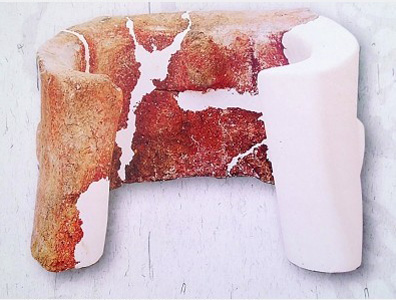|
 |
|
ANCIENT COOKER: A pottery stove discovered at the Neolithic Shunshanji site in Sihong, east China's Jiangsu Province (JSCHINA.COM.CN) |
Six most significant new findings in the year 2012 across the country were announced at the annual New Archeological Discoveries Forum, held by the Institute of Archeology of the Chinese Academy of Social Sciences (CASS) in Beijing on January 9.
Professor Wang Wei, head of the institute, said the discoveries included the Neolithic Shunshanji site in Sihong, Jiangsu Province; the Neolithic Shimao site in Shenmu, Shaanxi Province; the Bronze Age Adunqiaolu site and cemetery in Wenquan, Xinjiang Uygur Autonomous Region; the Spring and Autumn Period (770-476 B.C.) Jiwanggu Tomb in Yishui, Shandong Province; the Eastern Wei (534-550) and Northern Qi (550-577) period Buddhist temple and stone statues found at the Yecheng site in Hebei Province; and the Hailongtun fortress site in Zunyi, Guizhou Province.
"Some findings might not be sensational, but for us archeologists, they have remarkable significance," he said.
The Neolithic Shunshanji site in Sihong County is a prehistoric settlement relic with an 8,000-year history. It is the first such site to be found in the middle and lower Huaihe River valley.
The site covers an area of 175,000 square meters. Archeologists have excavated 92 tombs, 26 burning pits and five settlement relics thus far. Scientists also found more than 400 pottery pieces, stone and jade ware as well as bone artifacts.
Chen Xingcan, an institute archeologist, said the period dating back 8,000 years was very significant in Chinese history. Scientists have found two similar prehistoric sites in northeast China and the middle and lower reaches of the Yangtze River. Remarkably, Shunshanji reveals a well planned village and evidence of rice growing, which suggests primary agriculture practices at the time.
In addition, findings have uncovered a multicultural aspect in that unearthed pottery pieces bear some relation to that of another civilization in Shandong Province. As research continues, it might help scientists find the source of other prehistoric civilizations in the area, Chen said.
| 